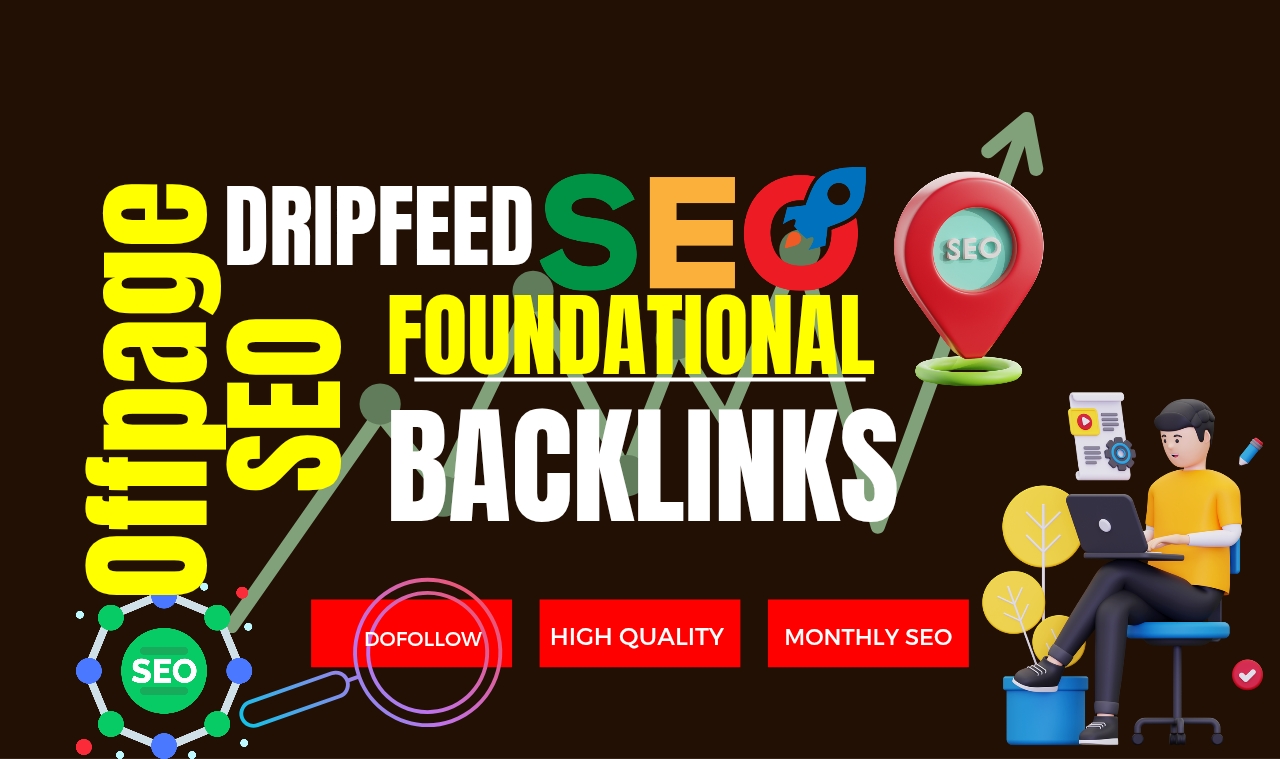
Off-page SEO plays a crucial role in improving your website’s search engine ranking and increasing organic traffic. While on-page SEO focuses on optimizing your website’s content and structure, off-page SEO involves activities outside your website, primarily link building.
In this guide, we’ll explore effective off-page SEO strategies, focusing on powerful backlinks, manual backlinks, drip-feed SEO, foundational backlinks, and mix backlinks.
What is Off-Page SEO?
Off-page SEO refers to all the efforts made outside your website to boost its authority and search engine rankings. The most important aspect of off-page SEO is backlink building, where other websites link to your content, signaling to search engines that your site is credible and valuable.
Why Backlinks Matter in Off-Page SEO
Backlinks are like votes of confidence from other websites. The more high-quality and relevant backlinks your site has, the higher it ranks in search engine results pages (SERPs). However, not all backlinks are created equal. Understanding different types of backlinks and their impact is crucial for a successful off-page SEO strategy.
—
Types of Backlinks in Off-Page SEO
1. Powerful Backlinks
Powerful backlinks are high-authority links from authoritative websites in your niche. These backlinks hold more value because they come from well-established sources with high domain authority (DA).
How to Get Powerful Backlinks:
Guest posting on high-DA websites
Earning links from industry leaders and influencers
Getting featured in news publications and authoritative blogs
Creating high-quality, shareable content
2. Manual Backlinks
Manual backlinks are links that you acquire through outreach and direct effort rather than automated processes. These backlinks are considered safe and effective because they come from intentional and relevant link-building strategies.
How to Build powerful backlinks:
Reaching out to bloggers and website owners for guest posts
Submitting your site to high-quality business directories
Engaging in industry forums and Q&A sites (Quora, Reddit)
Building relationships with niche-relevant influencers
3. Drip-Feed SEO
Drip-feed SEO is a strategic approach where backlinks are built gradually over time instead of all at once. This helps maintain a natural link-building profile and avoids search engine penalties.
Benefits of Drip-Feed SEO:
Looks more natural to search engines
Prevents sudden spikes in backlinks that may trigger penalties
Allows for continuous SEO growth and improvement
How to Implement Drip-Feed SEO:
Spread out link-building campaigns over weeks or months
Use different types of backlinks (guest posts, forums, social media links)
Vary anchor texts and link placements
4. Foundational Backlinks
Foundational backlinks are the initial set of links that establish a website’s credibility and authority. These backlinks help build a strong base for future link-building efforts.
Examples of Foundational Backlinks:
Business directory listings (Google My Business, Yelp)
Social media profile links (Facebook, Twitter, LinkedIn)
Forum and community profile links
Web 2.0 blogs (Medium, WordPress, Blogger)
These links don’t carry as much weight as powerful backlinks, but they are essential for creating a natural and diverse backlink profile.
5. MiX Backlinks
MiX backlinks refer to a diversified backlink strategy that combines different types of links, such as:
Do-follow and no-follow backlinks
Contextual and non-contextual links
High-DA and low-DA links
Anchor text variations
Why MiX Backlinks Matter:
Ensures a natural link-building pattern
Reduces the risk of penalties from Google updates
Helps improve rankings for multiple keywords
—
Best Practices for Off-Page SEO Success
To maximize your off-page SEO efforts, follow these best practices:
1. Focus on Quality Over Quantity
Avoid spammy, low-quality links. One powerful backlink from an authoritative website is more valuable than dozens of low-quality links.
2. Diversify Your Backlink Profile
Use a mix of backlinks, including guest posts, forum links, directory links, and social media links, to build a strong and diverse backlink profile.
3. Monitor Your Backlinks
Regularly check your backlinks using tools like Ahrefs, SEMrush, or Google Search Console. Remove or disavow toxic links that could harm your rankings.
4. Engage in Social Media & Community Building
Sharing your content on social media platforms can help generate natural backlinks and increase your website’s authority.
5. Stay Updated with Google’s Algorithm Changes
Google frequently updates its algorithms, so staying informed will help you adapt your strategies to avoid penalties.
—
Conclusion
Off-page SEO is essential for boosting your website’s authority and search engine rankings. By leveraging powerful backlinks, manual backlinks, drip-feed SEO, foundational backlinks, and mix backlinks, you can create a strong and sustainable SEO strategy.
Focus on quality, diversity, and consistency to ensure long-term success in search rankings. Start building your backlinks today and watch your website grow!
Would you like help with a custom off-page SEO strategy tailored to your website? Let’s connect!





Leave a Reply